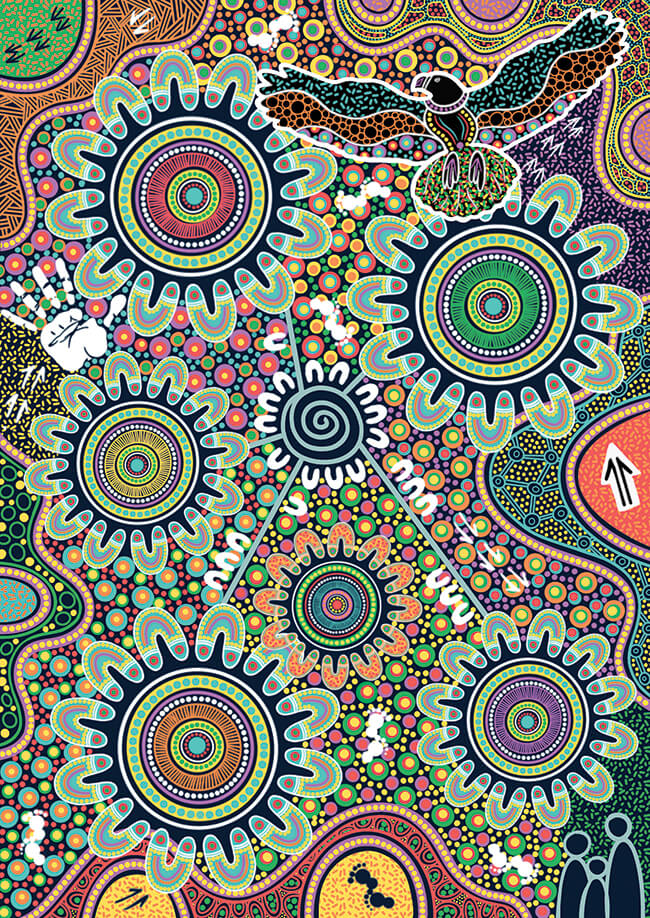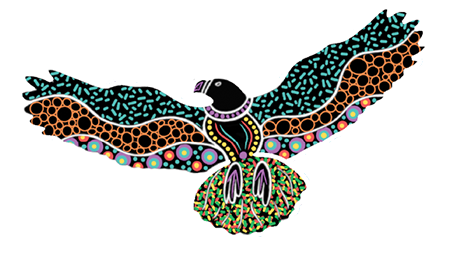CIT will be closed from Monday 22 December 2025 for the holiday shutdown. Regular open hours will resume on Monday 5 January 2026.
Our vision for reconciliation
CIT is committed to ensuring it is a culturally responsive and inclusive space for students, staff and the community. We promote understanding of First Nations history, connection to Country and the ongoing impact of colonisation. We prioritise reconciliation, empowering our staff and students to actively contribute to improving our shared knowledge, building our capacity to uphold the rights of First Nations People within their workplaces and the wider community.
The CIT Innovate Reconciliation Action Plan (RAP) 2025-2026 received Official Endorsement from Reconciliation Australia in November 2024.
The CIT RAP Working Group worked diligently on developing CIT’s Innovate RAP, with the support of Burbangana Group, a 100 per cent First Nations owned consultancy business.
With the CIT 2025-2026 Innovate RAP now officially endorsed by Reconciliation Australia and the CIT Board, work is now underway to develop an implementation and monitoring plan to ensure we deliver on our commitments made in the RAP.
History of reconciliation at CIT
- 2016 (19 October): Official launch of the CIT Reconciliation Action Plan 2016-2019 (PDF, 14.3MB). CIT successfully met all requirements mentioned in our 2012-2014 Reconciliation Action Plan and are very proud to produce our first Stretch RAP. This RAP signifies our commitment to reconciliation within our organisation.
- 2012 (30 August): The CIT Reconciliation Action Plan 2012-14(PDF, 2.4MB) was officially launched. A RAP implementation committee has been established to drive and monitor the progress of the plan.
- 2009: CIT issued a Reconciliation Statement Reaffirmation during CIT NAIDOC Week and also adopted the Aboriginal and Torres Strait Islander Library and Information Resources Network (ATSILIRN) protocols.
- 2002 (31 July): CIT was the first ACT Government Agency to launch a Reconciliation Statement.
- 2000 (2 June): CIT Reconciliation Sub-Committee established to develop a Reconciliation Statement for CIT and plan reconciliation activities.
- 1998 – 2004: CIT participated in the national Sorry Book initiative, contributing signatures, stories and apologies from staff and students across all CIT campuses over several months.
'Brighter Futures' by LaToya Kennedy, Ngunnawal and Wiradjuri Artist

This artwork has been created with a vision of telling a story about the Canberra Institute of Technology (CIT) and the vital role it plays in providing culturally safe and inclusive technical and vocational education and training in the Australian Capital Territory (ACT) - being the hub for building skills and knowledge on Ngunnawal Country.
This artwork depicts the strong connections and learning pathways that CIT provides around the ACT and region; and represents community, sharing knowledge and skills, and providing opportunities between CIT, First Nations Peoples, and non-Indigenous Australians. It also represents equality, respect, trust, and growth between our educators and students learning on Country.
The three large meeting places represent Woden, Fyshwick, and Bruce campuses, with the educators represented with the colours red, green, and orange. The two smaller meeting places represent Gungahlin and Tuggeranong campuses, with the educators represented with the colours yellow and purple. The small meeting place linked to the Bruce campus is CIT Yurauna, a dedicated Aboriginal and Torres Strait Islander Educational Centre of Excellence and hub for culture, community, and connection. The smallest meeting place in the centre represents students and their connection pathways to the diverse programs, qualifications, and certificates offered across CIT.
‘Maliyan’ the wedgetail eagle represents the totem of the local Ngunnawal People. Totem animals hold immense significance in First Nations culture as they represent Aboriginal identity, spirituality, kinship, and connection to the land; and serve as guardians, protectors, and guides, offering wisdom, strength, and guidance throughout life.
The handprint and animal tracks represent people, culture, and Country; and the footprints represent us on our journey - keeping song, dance, art, knowledge, and culture alive with a spiritual connection to our ancestors and The Dreaming.
This artwork demonstrates connections and unique relationships that Aboriginal and Torres Strait Islander Peoples have with the Country and land, and respect for our traditions and culture.
Artist biography
Yuma
My name is LaToya and I’m a proud Ngunnawal and Wiradjuri woman - my grandmother is Ngunnawal from Yass, and my grandfather is Wiradjuri from Cowra, both small country towns in Central West New South Wales (NSW). I was born in Cowra, grew up in Canberra and I now reside on beautiful Dharawal Country in Wollongong NSW; my connections extend across Wiradjuri, Ngunnawal and Dharawal Country.
My art represents the strong, continuing connections and unique relationships that I have with my Country, land and community, and the respect that I have for my culture and traditions. I get my inspiration from my surroundings, recreating elements of Country and telling stories through symbolic representation. I also draw inspirations from my ancestors who have walked this land before us, and who have managed and maintained this land for tens of thousands of years.
Djan Yimaba Yara
LaToya Kennedy

CIT acknowledges the cultural host Nation of the ACT, the Ngunnawal People, as Traditional and continuing Custodians of the ACT and Region and recognises other First Nations People or families with connection to the lands and waters of the ACT and region.
We recognise the special relationship and connection to Country they have with this area since time immemorial. CIT acknowledges the continuing cultures of First Nations Peoples and the significant contribution they make to this city and region.
CIT is committed to listening and learning from the cultures, histories, knowledges, and values of First Nations Peoples. This commitment aims to improve the experience and outcomes of our education and training services in a way that is culturally safe and ensures equitable outcomes for all First Nations Peoples, their families, and communities. CIT acknowledges all First Nations Peoples who come to this region to study, work, and live and the rich contribution they make to CIT and the region.
More information
For more information about reconciliation and RAPs, please visit Reconciliation Australia.
- Aboriginal and Torres Strait Islander Library and Information Resources Network (ATSILIRN) protocols (PDF, 2.3MB)
- CIT Reconciliation Action Plan 2012-14 (PDF, 2.4MB)
- CIT Reconciliation Statement (PDF, 981KB)
- CIT Reconciliation Action Plan 2016-19 (PDF, 14.3MB)
- CIT Aboriginal and Torres Strait Islander Cultural Protocols (PDF, 1.8MB)




